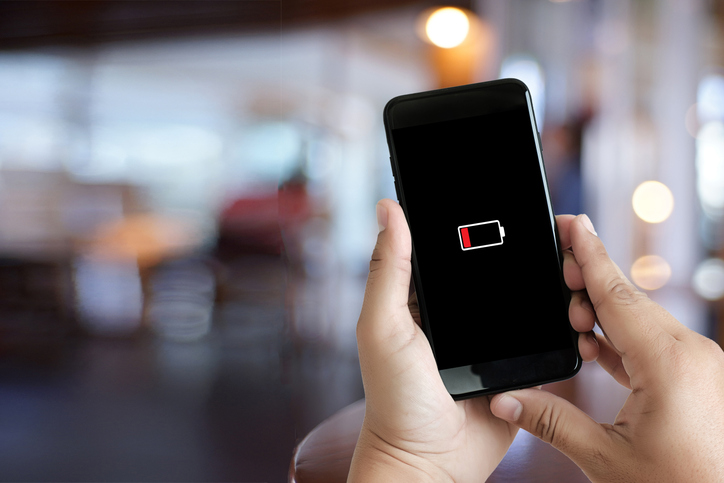
by Felicien | Jun 5, 2019 | Education
With the adoption of technology in the personal and commercial spheres ramping up to breakneck speed, the need for clear objectives for key business personnel like CMOs has never been greater. CMOs need to know what their responsibilities are. It may seem like a question with an obvious answer, but the reality of tech and business has made the answer much less clear than it once was. It can be argued that the role of the CMO has changed dramatically in recent years, far more than it has changed at any time since CMOs first came into existence. Marketing and tech are now inextricably interwoven and are unlikely to separate anytime in the foreseeable future.
Given the importance of tech in marketing and the necessity to make marketing efforts successful for the growth and maintenance of business, CMOs must be included in the decision-making process related to digital technology. When it comes to anything to do with marketing and customer engagement, including tech decisions, the CMO needs to be consulted. What tech a business uses, how it uses it and what changes need to be made—all of these choices should be made with the input of the CMO in today’s modern business.
Marketing and Tech—Ways Businesses are Investing in Technology
Saying that spending on marketing-related technology is increasing is an understatement at this point in time. In fact, the 1% of business spending that is common for marketing technology in the past few years is expected to grow to 10% by 2025. That is a huge increase, one that gives a clear indication of why key marketing decision makers, CMOs to be specific, are going to be much more involved in making tech decisions in the coming years. Some of the areas that are primary focuses for business spending today include:
CRM
CRM or customer relationship management software is drawing heavy investment from a wide range of industries because it offers an efficient way to manage and analyze the data produced from customer interactions. A single interaction might not tell a business too much about its overall market, but a thousand interactions do begin to paint a picture. When so many interactions are added up over the years, the potential for gaining important insights into how customers behave and react to the activities of a business is huge. CRM is an area where CMOs and CIOs can come together to learn an incredible amount of information about their market.
Digital Marketing
Marketing used to fall under the category of creative work much more than it did technical work, but modern tech has greatly blurred those boundaries. Marketing teams are engaging with consumers through a variety of digital platforms—with more and more platforms popping up regularly. Keeping up with the digital marketing options and what tools are effective at any given moment is a significant task, one that requires ongoing investment from businesses. Digital marketing is only expected to take a bigger piece of the marketing budget pie in the coming years. CMOs are the leaders of marketing for their perspective businesses. They certainly need the help of CIOs to implement their ideas, but in the end, it is the CMOs who are best equipped to choose a path forward in the marketing arena for businesses.
Marketing Automation
All the digital marketing opportunities available quickly create situations where human marketing teams cannot keep up with all the tasks on their plate. Marketing automation offers tools to automate many of the basic tasks that are required for businesses to keep their customers engaged and satisfied with their experiences. Automation can reach out to share new offerings from businesses, as well as react to actions performed by customers as they reach out to companies. Automated chat options on company websites are one example of how automation has grown increasingly prevalent and essentially required for businesses that want to stay on top of all the expectations that consumers have.
CMO Responsibilities for Digital Tech Decisions
Once it becomes clear how much marketing and technology are combined in today’s business environment, it becomes obvious that the role of the CMO must include participating in tech decisions. CMOs do not necessarily always have to be the leader in the decisions a company makes regarding its technology, but in most instances, they should be included in the decision-making process.
There are a few ways to determine if a tech decision requires the CMO, including:
Does it involve marketing? If the technology decision in question has anything to do with company branding, consumer interaction, or other marketing focus, the CMO most definitely needs to be involved.
Does it involve customer interaction? The marketing team specializes in creating and developing customer relationships. If the technology involves customer relationship management, the CMO needs to be involved.
There are technology decisions that may not need the input of the CMO, or at least they do not require the CMO to lead the way. For example, deciding which servers are best for the company does not involve marketing. It is clearly a hard tech decision, which is more appropriate for the CIO.
Ideally, CMOs and CIOs should be working together to make tech decisions for the company. The more they can work together and contribute their expertise, the better the company will be able to navigate the complex future of businesses and technology.

by Felicien | Jun 4, 2019 | Education
Keeping photos and videos on your Mac is convenient. Depending on your line of work, it may even be essential. Photos and videos can eat up serious storage space, though, and today’s solid state drives aren’t always the most spacious.
Users who run into storage space limits often start paring down their photos and videos. Photo libraries transferred from phones usually end up with plenty of throwaway photos. Macbook users running MacOS Mojave may run into trouble still. They delete gigabytes worth of photos and videos, but that doesn’t make a difference in their available storage space.
Deleted, But Not Forgotten
What’s going on here? As the old saying goes, “it’s a feature, not a bug.” MacOS Mojave included numerous app updates, and the Photos app got a big behind-the-scenes overhaul. One “magic” feature is the ability to recover photos that were deleted within the app. For around 29 days, users can restore photos that they’d deleted, as long as they deleted them inside the photos app rather than in Finder.
The trick here is that Photos isn’t doing anything by magic. When you delete photos inside the Photos app, those photos don’t actually get deleted. Instead, they simply get moved to a hidden folder. If you later realize you made a mistake, you can undelete the photo. The app “magically” goes into the hidden folder, finds the photo, and moves it back to the normal location.
The Problem with the Hidden Trash Bin
This feature has a problem, though: since the photos don’t get deleted, you don’t get the storage space back. If your main goal is to gain storage space, and you’re sure you don’t need the photos back, it’s time for a workaround.
Finding and Emptying the Hidden Trash
To find and empty the hidden trash, first open the Photos app. In the sidebar, you should see a tab named Library. You’ll see a variety of entries here, including Photos, Memories, and People. At the bottom of the list you should see Recently Deleted. Click it.
In the Recently Deleted folder are all the photos and videos you’ve deleted in the last month or so. Right click on individual items to delete them permanently or use the “Delete All” button in the upper right corner if you’re sure that everything is really trash.
Find Something You Like? Click “Recover”
As you look through your Hidden Trash, you might see something you didn’t intend to delete. Right click on it and choose Recover. You may also use the Recover button in the upper right. Either method returns the item to its original location.
Conclusion
Finding the Hidden Trash is one way to alleviate storage concerns, but it isn’t always enough. For more help with storage concerns, contact us today. We’re ready to help your business’s IT reach the next level.

by Felicien | Jun 4, 2019 | Education
Battery technology has come a long way in the past several decades. Today’s lithium-ion batteries are a pretty amazing feat of engineering, offering high capacity, low power leakage, and comparatively long life. That said, they aren’t perfect, and they don’t last forever.
Getting the most use out of your phone’s battery requires a little effort and a little know-how. Follow these tips to get the most from your Android battery.
Understand the Limitations
Even when well maintained, smartphone batteries will degrade over time. This is simply a result of use. After two or three years of moderate use, the battery in your phone won’t last as long as it did when it was new. This is normal.
Check for Defects and Damage
One big drawback to lithium-ion technology is that damaged batteries can become a fire hazard due to an electrolyte chemical reactions. You may remember the exploding Galaxy Note 7 debacle from a few years ago. If you notice your phone feeling swollen or bulging, chances are your battery is damaged and could be on its way to catching fire.
If the back casing comes off your phone, remove it and inspect the battery itself for leakage, cracking, or bulging. If you see any, replace the battery immediately. If you can’t access the battery on your Android phone but you see swelling or bulging in the phone itself, take your phone in for service immediately.
Calibrate the Battery
Sometimes a phone’s software can get confused about the battery’s true charge level. If your phone is dying at 25% charge or if the battery indicator swings wildly, you may need to recalibrate.
Note that calibrating the battery requires completely draining the battery to zero, something that itself can weaken your battery. Take this step when necessary, but try to avoid doing it frequently.
Step 1: Full Drain
Use your phone until it shuts itself off because of low battery. Android doesn’t wait until the battery is truly dead to do this, because it’s trying to help you avoid the full drain. In this case, we want to override it. Power your phone back up and let it die. Keep doing this until it won’t power on at all.
Step 2: Plug It In
While your phone is off, plug it in. Don’t power it up. Let it charge uninterrupted until it reads 100%. Unplug and power up. If the phone now indicates something less than 100%, plug it back in until it reads 100%.
Step 3: Restart
Unplug and then restart the phone. If it still doesn’t read 100%, plug it back in until it does. Repeat step 3 until you get a 100% reading right after reboot.
Step 4: Repeat
Drain your phone to zero again and then charge to 100%. At this point, your battery should be completely recalibrated.

by Felicien | Jun 4, 2019 | Education
How to build an effective Hurricane Survival Plan
Now is the time to double check your supply inventories, invest in protective measures for your business, and make sure you have an actionable Hurricane Survival Plan in place.
The 2019 hurricane season is almost here – are you ready for it?
According to Moody’s Analytics, the 2018 hurricane season caused up to $50 billion in damages. Can you afford to be a part of however large that number becomes this year?
All of this is to say – we know when the hurricane season begins, and we can take steps to protect ourselves, our families, our homes and our businesses.
Without effective hurricane preparedness planning, your business can suffer devastating consequences during an emergency. Property damage and data loss can affect your resources, continuity and more, leading to loss of business, and lower return on investment in these resources.
What does effective planning for a hurricane really look like?
Key aspects of a Hurricane Survival Plan include:
Developing a Plan
As with most endeavors, the first step is to create a workable plan. Your business’ hurricane plan should be carefully constructed and written down for reference and review.
Remember, many companies are required to maintain an Emergency Action Plan by OSHA so this can be considered part of that process.
Your plan should put forth policies and procedures regarding employee safety, business continuity, and contingencies that can be activated if your business’ facilities are damaged.
There are three steps to an effective Hurricane Preparedness Plan:
Protect your property.
While so much of disaster recovery these days is focused on data continuity, it’s important to remember that your facilities are a resource as well, and they should be protected.
Make sure your windows have proper shutters or are boarded up with plywood to keep them safe from airborne debris.
Inspect your roof prior to each hurricane season to make sure it’s in good shape.
Assess whether there are any aging branches or trees that could fall and cause damage during a storm. If you’re unsure, have an arborist check it out for you.
Bring sandbags to areas that could be affected by flooding.
Secure heavier objects, including bookcases, shelves, filing cabinets, computers, etc.
Secure utilities, and raise them off the ground if necessary to avoid flood damage. Prior to the hurricane reaching your area, make sure they’re all turned off.
Relocate any fragile or valuable items to less dangerous areas, if possible.
Protect your documents.
Once all your physical assets are taken care of, don’t forget about your business documentation.
Make sure you have a backup of info on important business contacts.
Backup documents that are not easy to reproduce or acquire in the event of water damage – insurance and legal contracts, tax files, etc.
Keep as much of your documentation as possible in waterproof containers.
Maintain a checklist of survival resources.
Lastly, you’ll want to make sure you have an inventory of all the hurricane-specific resources you’ll need.
These are the types of items you won’t be using otherwise year-round, and so, when you do require them, you don’t want to realize you’ve forgotten something.
Independently powered radio/TV
Three-day supply of non-perishable food for as many employees as you have onsite (including 1 gallon of water per person per day)
Blankets, pillows, cots, and chairs
First Aid supplies
Flashlights (and additional batteries)
Toolkit
Whistles and/or signal flares
Tarps, plastic bags, and duct tape
Cleaning supplies
Smoke alarms and fire extinguishers
Electric generator
A backup supply of gas and additional jerry cans
Cash, credit cards and ID
Emergency contact info
Defining Procedures and Assigning Roles
Determine the critical staff that will need to be on-site or on-call during an emergency. It’s important to define who will be needed to keep your business running, and who should be responsible for any emergency response tasks. Remember that safety comes first and that your plan must focus on keeping your employees out of danger.
Coordination
A comprehensive plan should prepare your business to coordinate with others during an emergency. How are nearby businesses going to operate during a hurricane? How will police, fire, and medical response be affected? These questions are best answered before the storm hits.
Briefing Your Employees
Your hurricane plan should not be written and then left on a shelf. Every employee should be familiar with your procedures and plans to handle any future emergencies. Hold a meeting where your plan is reviewed, roles are assigned, and your staff can ask questions.
Reviewing and Updating Your Plans Annually
Changes in your business or the community in which you operate can have a major effect on your disaster plan. Be sure to review your plan at least once a year and make any necessary revisions to keep it current and effective.
What’s the bottom line of Hurricane Preparedness?
Effective hurricane preparedness keeps you safe and protects your assets, simple as that.
In addition to protecting yourself and your employees, proper business continuity planning should assess your individual requirements by estimating your current data retention needs and expected growth. You can then determine what systems are critical to your business and assess what recovery mechanisms are currently in place.
Based on this comprehensive analysis, you’re then able to build a hurricane preparedness plan that works best for your organization.
Remember – without comprehensive disaster recovery planning, you’re left vulnerable to any and all emergency situations, whether it’s a major meteorological event like a hurricane, or common — and still unpredictable — power outages. Consequences include:
Permanent data loss as onsite copies of your data are destroyed
Severe downtime as your business scrambles to replace hardware and get up and running again
Major financial damages, from the cost of lost business to the cost of replacement hardware and more.
So, the question is: will you wait until after you get hit with a hurricane to start thinking about how you’ll recover?
Or will you do what’s right for your business, and start planning for the worst-case scenario today?

by Felicien | Jun 4, 2019 | Education
Organizational structure is something that is hotly debated at businesses around the world, but one of the biggest mysteries is where it makes sense to have the technology teams. IT has both a strategic thread as well as a day-to-day operational focus, making it a solid fit for the office of the CEO or the COO — yet IT often lands with the CFO, especially if there isn’t a CIO in existence. Businesses tend to organize around the functional strengths of their leaders and their business operations. If you are researching where IT makes sense in the structure of your business, see why organizations around the world continue to closely align IT with the finance department.
“We’ve Always Done It That Way”
Historically, IT has been aligned with finance due to the original reason technology was introduced to businesses: to aid in digitizing accounting functions. The highly detailed work that is performed by both finance and technology teams worked in lockstep, as finance executives leaned on IT for financial computing initiatives that would help make the organization more efficient and effective in their financial interactions. Over time, the original need for digitizing accounting morphed — yet the reporting structure still made sense. CFOs needed to have a tight handle on the burgeoning budgets that the technology teams needed to support the needs of the business. Many businesses find themselves locked into this aging structure for one of the worst reasons of all: “We’ve always done it this way”.
Aligning Departments Around Business Functions
At first blush, IT may seem to have more in common with operations than with finance. There are plenty of moving parts in both operations and technology, but that is where the parallels break down. Maintaining the daily execution of tasks is quite operational in nature, but the far-reaching strategic nature of IT is where the power truly lies for the organization. Hiding IT within the office of the COO could reduce the overall effectiveness of IT and may also lead to the team being a target when there is a need for budget cuts. Without a strong seat at the table for technology as it relates to the future of the business, both finance and operations Chiefs may reduce spending without seeing the longer-term impact of their decision.
Shifting Business Strategy
As more CEOs consider IT initiatives as strategic imperatives, the structure of organizations will continue to shift. CIOs — although they are “Chiefs” — have not always had a place reporting directly to the CEO of the organization as other chief officers do. Instead, they are relegated to second-string status by reporting to the CFO or COO, especially if there is a perception that the CIO is not comfortable enough working through complex business problems as well as providing technology solutions. The shifting business strategies that are caused by exceptional levels of innovation and competition in terms of technology make it more likely than ever that CIOs will be raised to the level of the CMO and CFO in terms of organizational structure.
There are no perfect or “right” structures for your organization. As technology leaders continue to expand their knowledge outside the scope of the technical realm, they are less likely to be reporting to the CFO and COO and more likely to be able to earn representation at the highest levels of the organization. This evolution of IT may feel uncomfortable for some organizations, but will ultimately help boost the visibility of technology projects that are often core to the success of the business.

by Felicien | Jun 4, 2019 | Education
Are You One Of Many Affected By The Quest Diagnostics Breach?
Financial & Medical Information of 12 Million Exposed
Quest Diagnostics reports that almost 12 million people could have been affected by a data breach.
On Monday, June 3, 2019, Quest Diagnostics said that American Medical Collection Agency (AMCA), a billing collections provider they work with, informed them that an unauthorized user had managed to obtain access to AMCA systems.
Quest Diagnostics is one of the largest blood-testing providers in the U.S.
Anyone who has ever been a patient at a Quest Diagnostics medical lab could be affected by the breach.
AMCA provides billing collection services to Optum360, which is a Quest contractor. AMCA first notified Quest about the breach on May 14th. Quest reports said that they are no longer using AMCA and that they are notifying affected patients about the data exposure.
The information included in the breached system includes:
Bank account information
Medical information
Credit card information
Social Security Numbers
Other personal information
In its filing, Quest reported:
“Quest Diagnostics takes this matter very seriously and is committed to the privacy and security of patients’ personal, medical and financial information.”
What Should You Do?
Anyone who was affected by the data leak should freeze their credit report to prevent criminals from opening credit card accounts in their name. They should also be concerned that their Social Security numbers were exposed.
If you believe that your information has been leaked, you can contact Quest Diagnostics’ customer service at 1 (866) 697-8378 or on their contact page.





